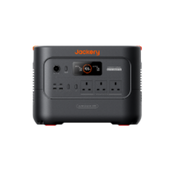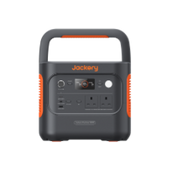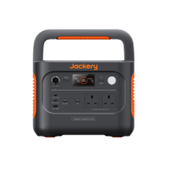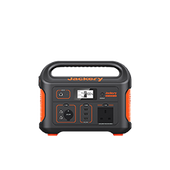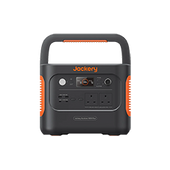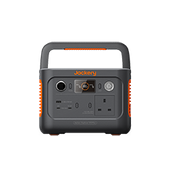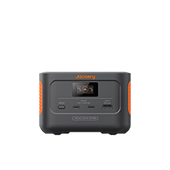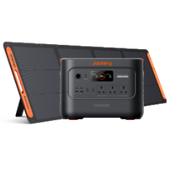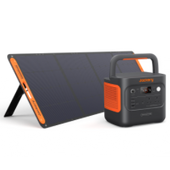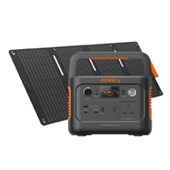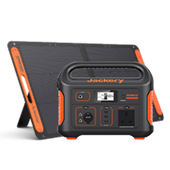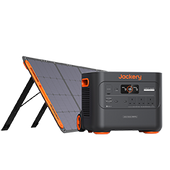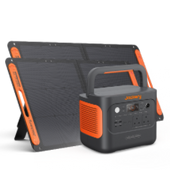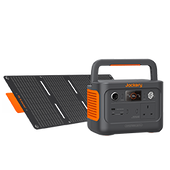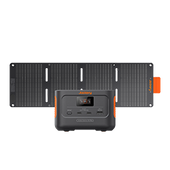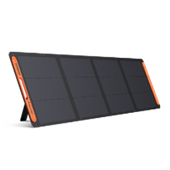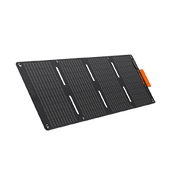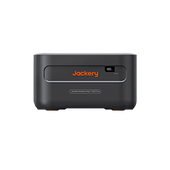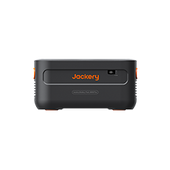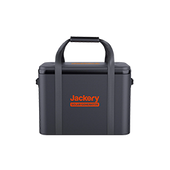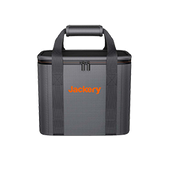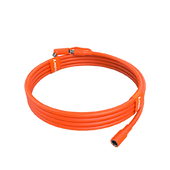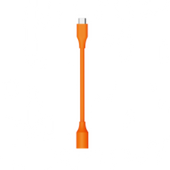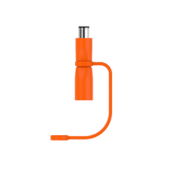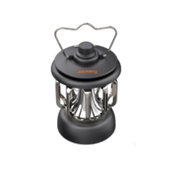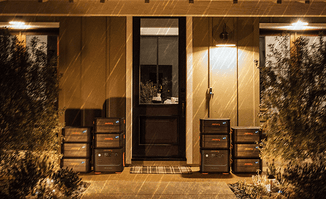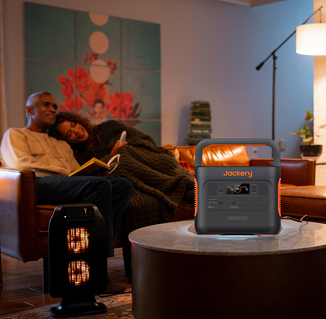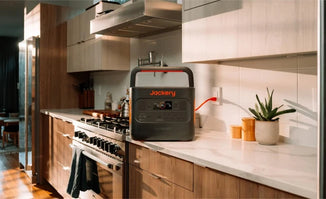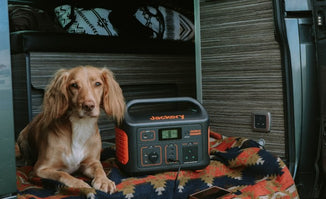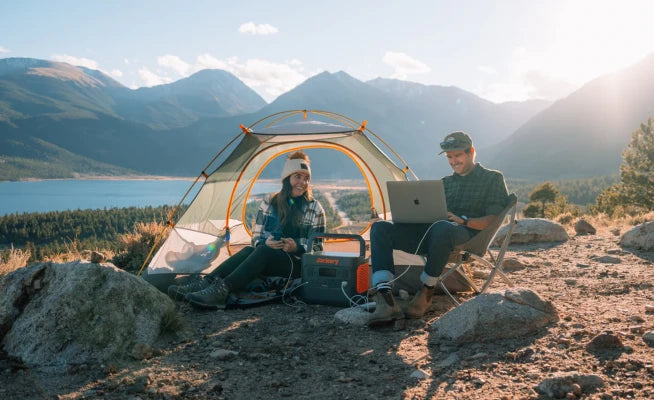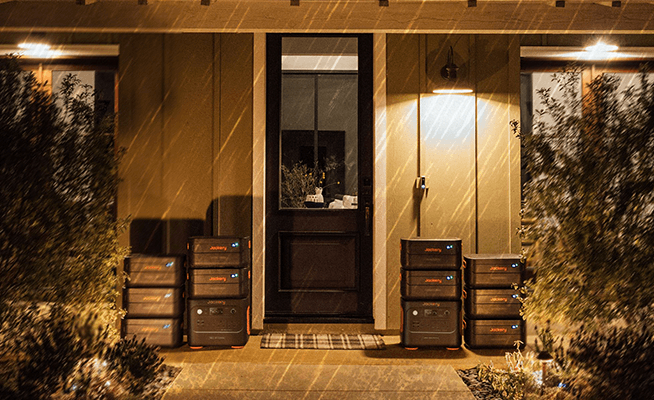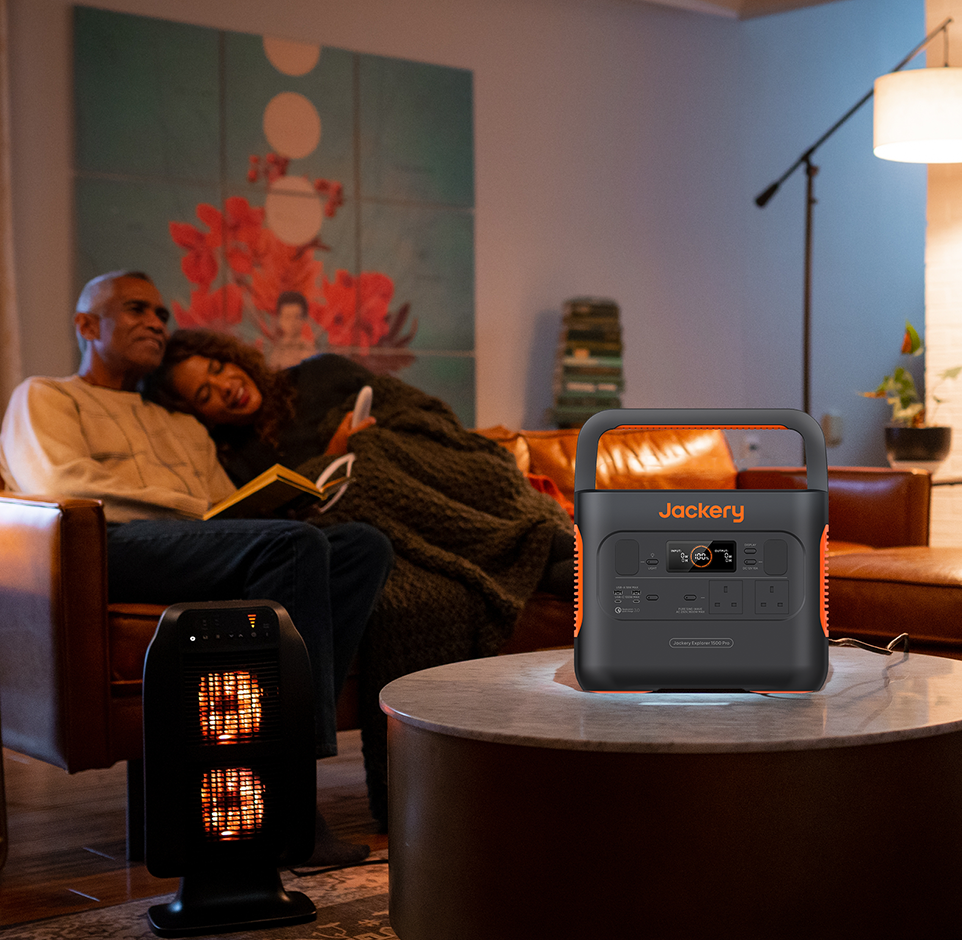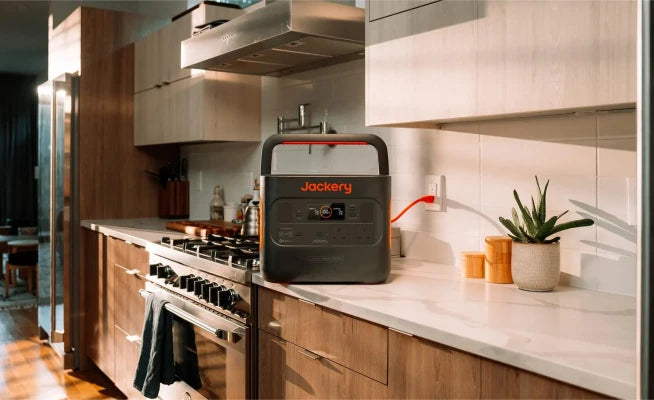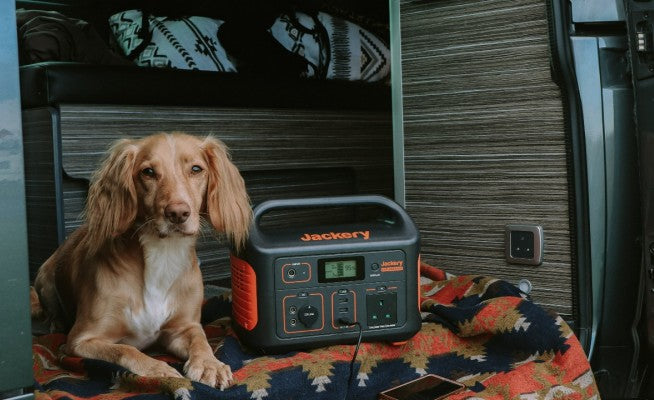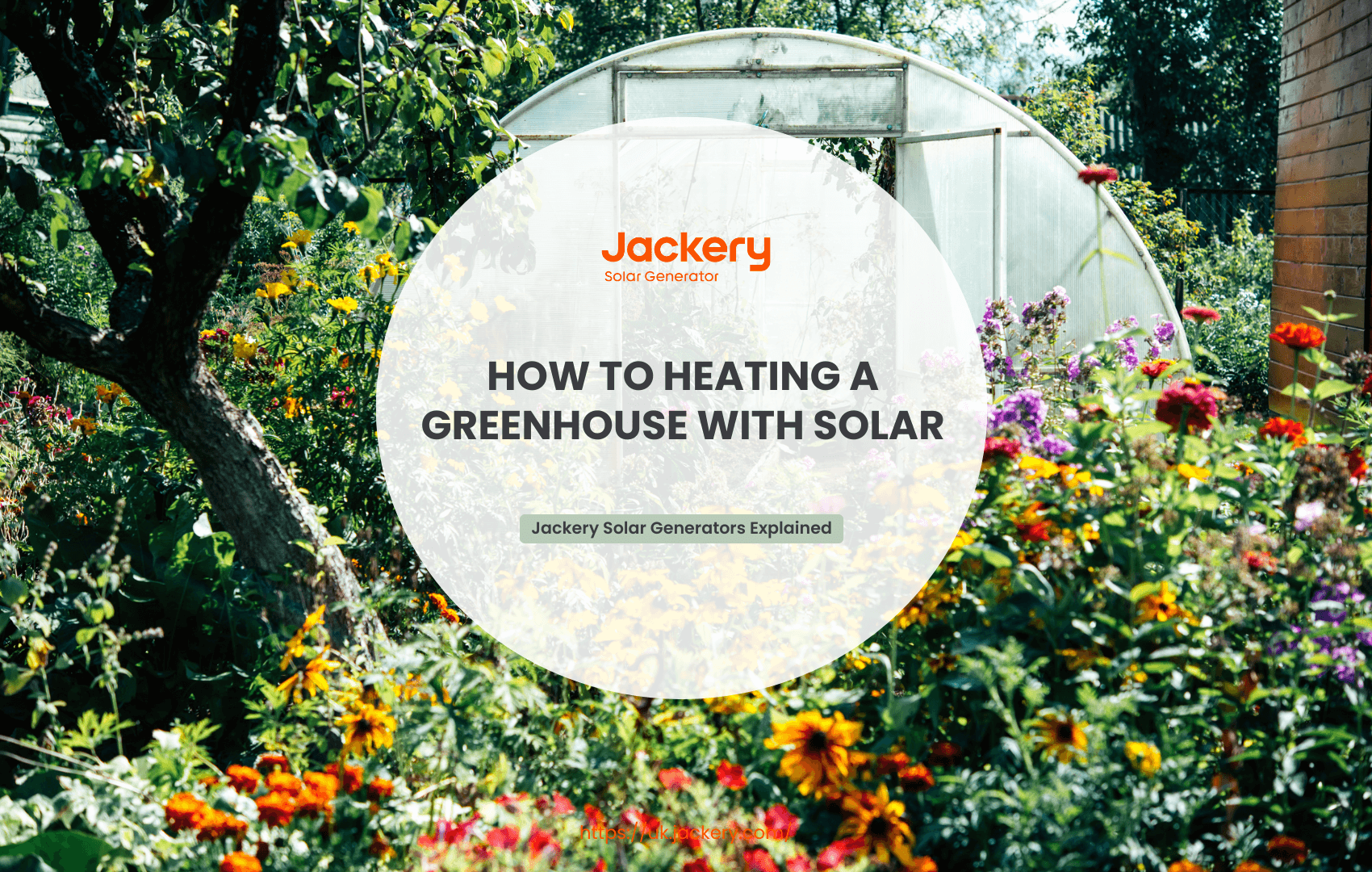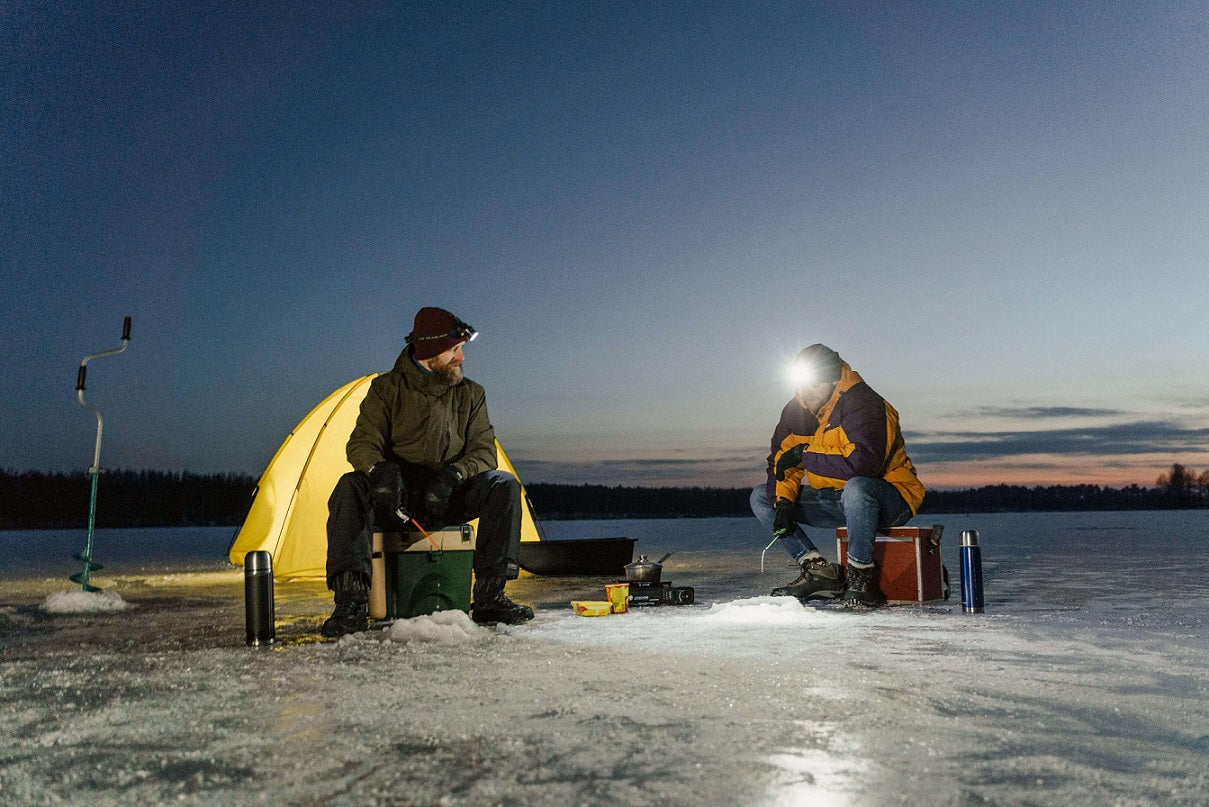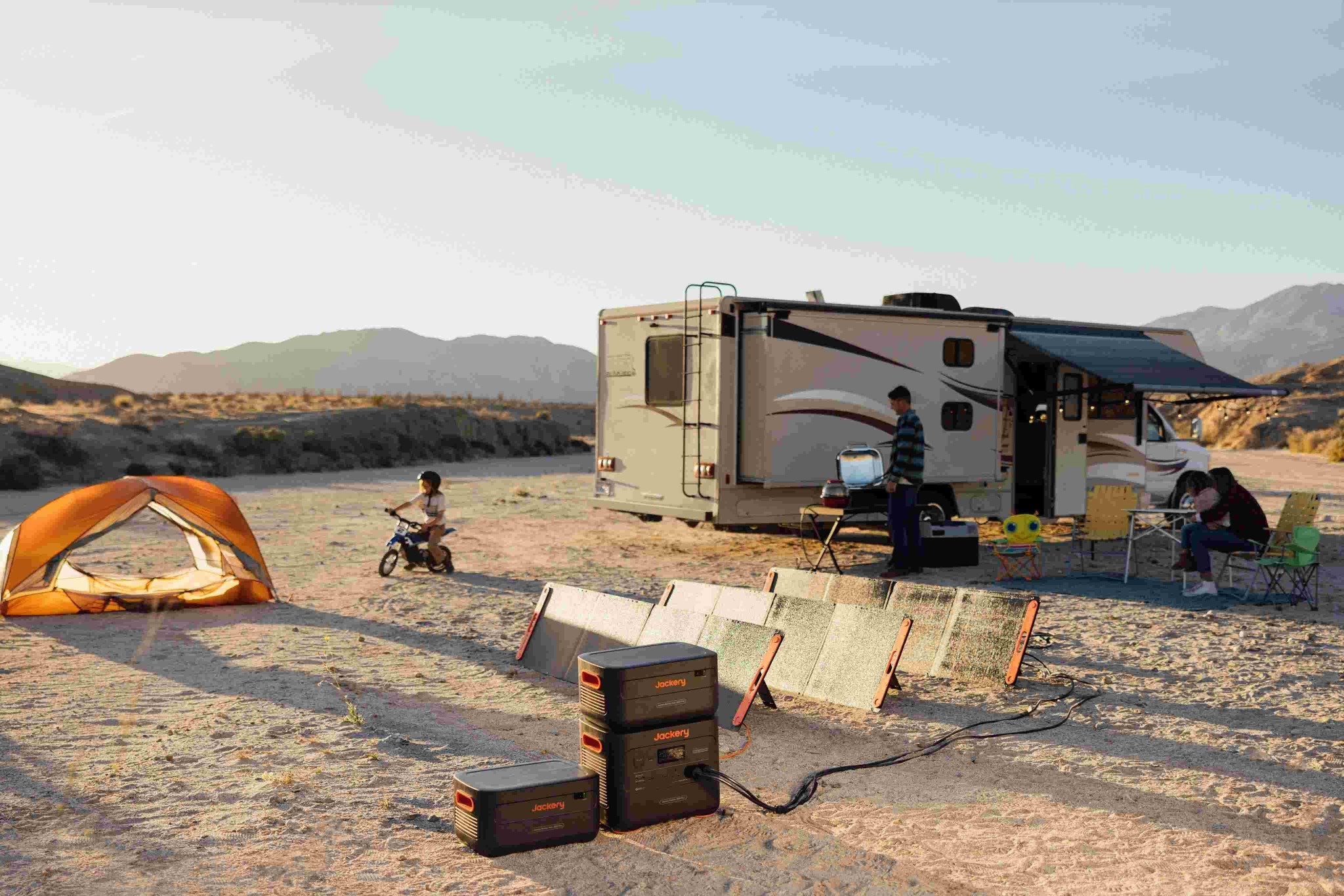If you have a greenhouse, you can carry out agricultural and gardening work all year round. However, maintaining the optimal temperature in the greenhouse and running various equipment consumes much energy. Therefore, using and integrating renewable energy sources is becoming increasingly important.
Heating a greenhouse with solar is an efficient way to use the sun's energy, minimise electricity costs, and increase overall production. In this guide, we will explore how heating a greenhouse with solar works, the benefits, specific implementation steps, tips for maximising its efficiency, and how to store excess solar energy.
If you think heating a greenhouse with a roof-top solar panel system costs too much, consider a portable solar system, like Jackery Solar Generator, which can power your greenhouse appliances with higher capacity and portability.
|
Key Takeaways: |
|
- Heating a greenhouse with solar energy mainly maintains the appropriate temperature by collecting, storing, and distributing solar energy. - Without leaving the grid, a small or medium-sized greenhouse may need at least 8 400W solar panels. - Heating a greenhouse with solar energy requires evaluating its heating needs, installing solar photovoltaic systems and electric heating equipment, and supplementing with passive solar technology. - Maximising the efficiency of heating a greenhouse with solar energy requires optimising greenhouse materials, designing insulation, and combining intelligent management equipment. - Storing excess solar energy in heating a greenhouse with solar can be done through battery storage, compressed air storage, or pumped storage. - We recommend Jackery Solar Generator 3000 v2 and 2000 Plus to power your greenhouse appliances, such as your water pump and power tools, effectively. |
How Does Heating a Greenhouse with Solar Work?
Heating a greenhouse with solar energy is an environmentally friendly and economical solution that mainly maintains a suitable temperature by collecting, storing, and distributing solar energy. In addition, heating a greenhouse with solar energy is primarily achieved through active and passive methods, and the working principles and system designs of the two are different.
Active Solar Heating
The active solar system collects and transmits solar energy through mechanical devices (such as pumps, fans, and pipes) to convert solar energy into adjustable heat energy for the greenhouse.
The following is the heating principle of the active solar system:
Heat Collection and Heat Energy Conversion: Photovoltaic collectors (flat plate collectors or vacuum tube collectors) absorb solar radiation and heat the internal fluid (water, antifreeze, etc.).
Heat Exchange: The high-temperature fluid transfers heat to the heating medium (hot water or air) through the heat exchanger, driving heat dissipation equipment such as floor heating pipes and fan coils.
Energy Storage: The heat storage tank or phase change material stores excess heat energy and releases it at night or on cloudy days to maintain stable heating.
Passive Solar Heating
Passive solar systems do not require additional mechanical equipment and rely on building structural design, material thermal properties and natural cycles (such as convection, conduction, and radiation) to collect, store and distribute solar energy to achieve natural heating.
The following are the heating principles of passive solar systems:
Heat Collection: Large areas of south-facing glass or transparent films maximise the reception of solar radiation, and the heat energy directly heats the indoor air and soil.
Heat Storage: Set up thermal mass materials (such as thermal storage walls, buckets, stones, and soil) in the greenhouse to absorb heat during the day and slowly release it at night.
Insulation: Use thermal curtains or foam boards at night to reduce heat loss, and cellar or underground designs use the constant temperature characteristics of soil.
Natural Convection Regulates hot air flow through vents (hot air rises, and cold air sinks).
Direct Solar Electric Heating
Direct solar electric heating uses solar panels to generate electricity to power electric heaters in the greenhouse and heat the greenhouse. It is simple and easy to integrate into existing greenhouse structures. Solar photovoltaic systems convert sunlight into electricity to power electric heating equipment. The electrical energy is then passed through a resistance wire or heat pump to generate heat, which is released into the greenhouse through fans or radiators.

How Many Solar Panels Are Needed for a Greenhouse?
In the UK, the number of solar panels required to power an electric greenhouse heating system depends on the energy consumption of the greenhouse, the power of the solar panels, local light conditions, and the system's efficiency. Here is a step-by-step estimate:
Calculate the Annual Electricity Consumption for Greenhouse Heating
In the UK, it takes an average of 10–12 hours per day to heat a greenhouse in winter, usually not in summer. Assume an average of 5 hours per day throughout the year. Assume that the greenhouse uses electric heaters, which typically have a power of 1–5 kW. For example, a small to medium-sized greenhouse may require a 2 kW heater.
Then, the annual electricity consumption of this greenhouse is:
2 kW*5 hours/day*365 days=3650kWh/year
Estimating the Power Generated by a Solar Photovoltaic System
The average sunshine hours in the UK are about 1,000–1,200 hours/year, higher in the south (e.g. about 1,200 kWh/kWp/year in London) and lower in the north (e.g. about 800 kWh/kWp/year in Scotland).
Without considering the efficiency of the solar panel power generation, how much power does a 400W solar panel generate per year?
400W*1200 hours=480kWh/year
Estimating the Number of Solar Panels
Based on the above data and content, how many solar panels does this greenhouse need?
3650 kWh ÷ 480kWh/panel ≈ 8 panels
Based on the above, a small or medium-sized greenhouse may require at least eight solar panels. If it is completely off-grid, 2-3 times the number of solar panels (such as 15-20 panels) may be required to cover the low power generation in winter.
Most importantly, the above calculations do not consider key variables such as solar panel efficiency, tilt and orientation, shading, and cleaning. It is recommended to consult a local solar supplier for a precise design based on the specific greenhouse size, insulation measures, and power consumption mode.
How to Heating a Greenhouse with Solar
Nowadays, heating a greenhouse with solar is a good choice. Active solar systems are too targeted for ordinary people, while passive solar systems are more suitable for auxiliary use. Therefore, the most suitable choice is to use a solar panel system and electric heating equipment to heat the greenhouse. Here are the specific implementation steps:

Step 1: Evaluate the Heating Needs of the Greenhouse
When calculating the greenhouse's heat load, you must consider the greenhouse volume, insulation materials, local climate, target temperature (usually plants need 5-25°C), and heat losses (ventilation, conduction, etc.). Usually, the season for heating the greenhouse is in winter. However, solar energy resources in the UK are limited (only 1-2 hours of sunshine/day in winter), and passive solar heating measures are required.
Step 2: Install a Solar Photovoltaic System
Install photovoltaic panels on the greenhouse roof or the surrounding open space, tilting 30°-40 ° to the south. Then, the daily power consumption will be estimated based on the greenhouse area and the heating needs. For example, a 100㎡ greenhouse requires about 3-5kW photovoltaic arrays. It is best to configure a battery energy storage system (lithium batteries) to store excess power during the day for use at night or on cloudy days.
Step 3: Choose Electric Heating Equipment
Please choose high-efficiency electric heaters to heat your greenhouse. Although resistance heaters are cheap and straightforward, they are inefficient. Storage heaters can use low electricity prices (such as Economy 7) to store and release heat during the day. Infrared heaters directly heat objects rather than air and are suitable for local heating.
Please install a smart thermostat and set the switching threshold for your heating equipment. For example, start the electric heating when the indoor temperature drops below 15℃.
Step 4: Grid-Connected vs. Off-Grid Solar
You must determine whether your greenhouse's solar PV system is grid-connected (connected to the utility's grid) or off-grid.
If you build an off-grid solar system, it must have a battery energy storage system. Otherwise, you cannot use solar energy to heat your greenhouse at night or in sunny weather conditions. In theory, staying on the grid can avoid the need to spend extra money on battery energy storage systems. However, if the grid-connected solar system is not equipped with a battery energy storage system, the greenhouse's heating will stop immediately if the power goes out.
Step 5: Apply Passive Solar Techniques
In addition to installing a solar PV system and electric heating equipment, you can heat your greenhouse using passive solar techniques.
Thermal Mass Heat Storage: Place buckets, rocks or concrete walls in the greenhouse to absorb heat during the day and slowly release it at night.
Dark Flooring: To enhance heat absorption, lay the greenhouse floor with black slate or gravel.
Wind Protection Measures: Plant windbreaks (such as holly trees) or install windbreaks around the greenhouse to reduce the heat dissipation of cold wind convection.
Tips for Maximising Efficiency of Heating a Greenhouse with Solar
In the cold climate of the UK, the efficiency of heating a greenhouse with solar energy needs to be improved by combining the principles of heat transfer and maximising the capture and retention of heat energy through scientific design and meticulous management. Here are some key tips:

Tip 1: Correct Orientation and Angle
The main facade of the greenhouse faces south to ensure maximum light absorption. The recommended inclination angle of the greenhouse cover is close to the local latitude (about 50°-55° in the UK), which can enhance sunlight incidence in winter.
Tip 2: Optimise Greenhouse Materials
The selection of greenhouse materials needs to balance light transmittance and thermal insulation. For example, low-iron glass with high light transmittance (light transmittance>90%) can reduce radiation attenuation. Double-layer insulating glass or ETFE film with low thermal conductivity can inhibit heat conduction loss.
Tip 3: Excellent Insulation Design
The greenhouse wall can adopt a composite structure, including outer glass, rock wool, and inner reflective film (aluminium foil layer), to form a radiation and thermal barrier. In addition, to reduce heat loss at night, the inner wall of the greenhouse can be covered with thermal curtains such as bubble film or insulation cloth.
Tip 4: Proper Ventilation and Humidity Control
Install electric skylights on the top and air inlets at the bottom to create a chimney effect for natural convection and exhaust hot air. This design can also help exhaust moisture in the greenhouse and reduce the risk of mould. Alternatively, a dehumidifier is recommended to help dehumidify the greenhouse.
Tip 5: Combine Smart Management Equipment
Deploy temperature and radiation intensity sensors in the greenhouse, and the linkage control system automatically adjusts. For example, Wi-Fi-connected smart temperature and humidity sensors can adjust ventilation or heating in real-time. Innovative management equipment can also record data and optimise seasonal strategies.
Tip 6: Regular Maintenance
Please clean the greenhouse's surface regularly because dust can reduce light transmittance by more than 20% and thus reduce radiation absorption efficiency. In addition, an infrared thermal imager can detect the tightness of the thermal bridge of the greenhouse's insulation layer, such as heat leakage at the seams. If damage is found, please repair it in time.
How to Store Excess Solar Power?
In heating a greenhouse with solar energy, efficient storage of excess energy is key to ensuring the system's stable operation. There are many ways to store excess solar energy depending on energy demand. Here are three common ways to store energy:

Battery Energy Storage
Battery energy storage stores photovoltaic power generation into batteries (such as lithium-ion or lead-acid batteries) and releases heat energy through resistance heating or heat pumps when heating is needed. It has a fast response speed and flexible installation, and it can be combined with intelligent temperature control systems to control temperature accurately. However, it requires additional electric heat conversion for direct heating, is costly, and needs to be replaced regularly.
Therefore, battery energy storage is suitable for small greenhouses with day and night balance as the primary purpose or as a supplement to other energy storage systems.
Compressed Air Energy Storage
Compressed air energy storage uses excess electricity to drive a compressor to store air in underground caves or gas tanks at high pressure. When heated, the compressed air is released to expand and drive a generator or directly use the compression heat through a heat exchanger. It has an extensive system capacity, a long life, and a lower cost than batteries. However, it has a high initial investment, a large system size, low energy conversion efficiency, and depends on geographical conditions (such as underground caves).
Therefore, compressed air energy storage is suitable for large agricultural parks or regional greenhouse clusters and needs to be combined with heat recovery systems to improve efficiency.
Pumped Storage
It releases water flow by gravity to drive heat exchangers or generate electricity for heating when needed. Its technology is mature and is ideal for large-scale, long-term energy storage. However, it depends on the terrain (elevation difference and reservoirs are required), the infrastructure investment is significant, and the construction period is extended.
Therefore, pumped storage is suitable for greenhouse complexes in mountainous or hilly areas and is more feasible when combined with agricultural irrigation needs.
Alternatives for Heating a Greenhouse with Solar
Unlike traditional generators, solar generators produce zero emissions while operating, contributing to a healthier environment for your plants and surroundings.
Solar power provides energy independence, protecting you from power outages and fluctuating energy prices. This ensures a consistent power supply for critical greenhouse systems. If your greenhouse is located in a remote area without easy access to the electrical grid, a solar generator, like Jackery Solar Generator, offers a viable and reliable power solution.
Jackery Solar Generator 3000 v2
The Jackery Explorer 3000 v2 Portable Power Station and SolarSaga 200W Solar Panels work together to create a strong and movable energy source. Its long-lasting 3072Wh LFP battery is the smallest and lightest 3kWh LFP solar generator on the market.
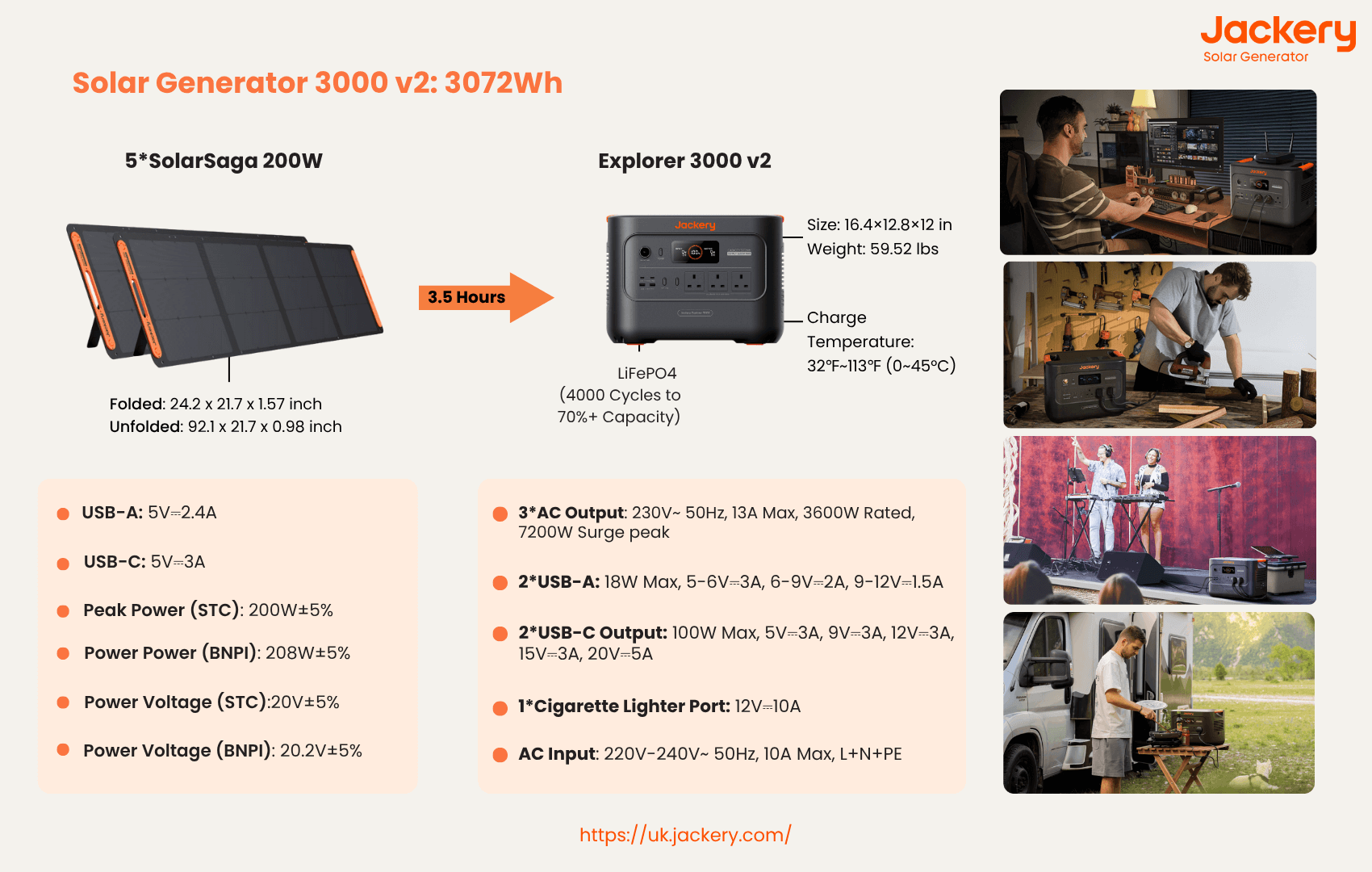
Jackery Explorer 3000 v2 Portable Power Station:
The Jackery Explorer 3000 v2 is a robust portable power station boasting a substantial 3072Wh LiFePO4 battery with an impressive lifespan of over 4000 cycles. It delivers a powerful 3600W continuous AC output (7200W peak) through four standard outlets and a TT-30 outlet alongside USB-C (100W PD), USB-A (QC 3.0), and a carport for versatile charging. Its fast recharging capabilities include up to 1800W AC input for a full charge in under 3.5 hours and up to 1000W solar input.
Designed for reliability and convenience, the 3000 v2 features UPS functionality with a quick switchover time, a comprehensive Battery Management System for safety, and a relatively portable design despite its capacity. While it doesn't support battery expansion, its significant power and diverse port selection make it an excellent choice for a greenhouse and powering demanding appliances outdoors.
Furthermore, despite its considerable capacity, the 3000 V2 prioritises user convenience with its sturdy handles for easier lifting and transportation. While not always explicitly stated as a standard feature across all retailers, some versions or bundles include protective accessories like dust covers or carrying bags. Its silent operation (below 27 dB) is a significant advantage over traditional generators, making it suitable for indoor and noise-sensitive environments.
Jackery SolarSaga 200W Solar Panel:
Boasting a power output 200W, it delivers the most rapid solar charging experience in Jackery's existing solar panel collection. It features adjustable stands and is constructed with monocrystalline solar cells and a honeycomb light-trapping design, achieving up to 25% solar panel efficiency.
The ETFE-laminated architecture renders it highly resistant to temperature and corrosion, with an operational temperature range of -20 to 65°C (-4 to 149°F). The battery grid is engineered on the rear of the panel, mitigating battery fractures while extending battery longevity.
Jackery Solar Generator 2000 Plus
Jackery has unveiled the Solar Generator 2000 Plus, a cutting-edge portable power solution with exceptional performance for greenhouses. Thanks to its substantial capacity and formidable power output, this device can sustain the operation of standard outdoor appliances for several weeks and fulfil all the power needs associated with greenhouses.

(*The working hours are only for reference; the actual working hours depend on your usage.)
Jackery Explorer 2000 Plus Portable Power Station:
The Jackery Explorer 2000 Plus allows adding extra battery packs, which boosts the capacity from 2 kWh to a remarkable 12 kWh, thus significantly enhancing the solar charging capabilities. With the ability to be expanded to 3000W, this solar product offers a 30% higher rated power than other 2 kWh solar goods available in the market.
The Explorer 2000 Plus is an industry's pioneering add-on battery pack that can be recharged using solar panels. This feature enhances versatility, improves charging efficiency, and reduces charging time. The LiFePO4 battery, with its sophisticated technology, guarantees a lifespan of 10 years, even with daily usage limited to once per day. Jackery Solar Panels generate more energy over their lifespan due to their exceptional solar conversion efficiency, reaching up to 25%.
With six SolarSaga 200W solar panels, the Solar Generator 2000 Plus can be fully charged in about two hours. Using solar energy rather than the grid to charge, the power source becomes completely autonomous. You can also choose wall sockets or carports to recharge it for 1.7 hours and 25 hours.
Jackery SolarSaga 200W Solar Panel:
Go green fast with the Jackery SolarSaga 200W sunlight Panel's high sunlight conversion efficiency of up to 25%. It is the ideal power source for outdoor travel and home backup because of its ETFE-laminated case, which prolongs its lifespan, and the suggested angle, guaranteeing optimal sunlight absorption. For the perfect solar power system, it is collapsable, portable, and rapidly connects to a power station.
Benefits of Heating a Greenhouse with Solar
Heating a greenhouse with solar energy can bring many benefits, providing a stable heat source for greenhouse crops to grow and being good for the environment. In general, heating a greenhouse with solar has the following significant benefits:
Energy Cost Savings
Although installing a solar greenhouse costs money, using free solar energy can reduce operating costs. Many greenhouse operators report the payback period for heating a greenhouse with solar energy is 5-10 years.
Stable Energy Supply
Solar panels can provide greenhouses with a certain degree of energy independence, reducing dependence on the grid. You don't have to worry about sudden power outages when used in conjunction with energy storage systems. In addition, heating a greenhouse with solar energy can effectively resist energy price fluctuations.
Extending the Planting Season and Increasing Yields
The UK has a rainy and mild climate, and heating a greenhouse with solar energy can maintain a stable temperature (15-25°C), extending the crop growing period. This can ensure that plants are suitable for growth and achieve maximum yields throughout the year. For example, you can grow off-season vegetables and increase agricultural economic benefits.
Enhance Market Competitiveness
Environmental protection measures such as heating a greenhouse with solar can attract consumers or partners who focus on sustainability and enhance market competitiveness.
Environmental Protection and Sustainability
Heating a greenhouse with solar does not require fossil fuels and produces almost no greenhouse gases. It complies with environmental regulations and significantly reduces its carbon footprint. Compared with coal-fired or gas-fired boilers, solar energy systems do not produce air pollution and are suitable for sustainable agricultural development.
In summary, despite the changeable climate in the UK, solar heating is still the preferred economic and environmental protection option for greenhouse agriculture, especially for growers who focus on medium- and long-term operations and sustainability.
FAQs about Heating a Greenhouse with Solar
The following are the frequently asked questions about heating a greenhouse with solar.
1. How much solar energy is needed to heat a greenhouse?
There is no exact answer to this question because many factors affect the amount of solar energy needed to heat a greenhouse. For example, the amount of solar energy required to operate a greenhouse depends on its size, the number of plants or crops, and the direct sunlight source in your location.
2. Are there any disadvantages to heating a greenhouse with solar?
While heating a greenhouse with solar has many advantages, there are still several significant challenges to consider:
High initial cost
High weather dependence
Large space requirements
Technical complexity
3. What are the low-cost ways to heat a greenhouse?
Using passive solar technology to heat a greenhouse is a low-cost, energy-efficient method achieved mainly through optimal design, material selection, and natural energy cycles. Buckets, stones, clay walls or brick floors can be placed in the greenhouse to absorb heat during the day and slowly release it at night. Gravel or soil can also be placed under the planting beds as a natural heat reservoir.
4. Does heating a greenhouse with solar have a bright future?
The future of heating a greenhouse with solar energy is bright. Here are some technological advances that could support this development.
Photovoltaic technology: Research into more efficient solar panels means that solar heating will be more feasible even in climates with low sunlight.
Battery technology: Advances in battery storage technology will increase the ability to harness solar energy, continuously ensuring continuous heating around the clock.
Smart grid integration allows greenhouses with solar systems to connect better to the broader energy grid.
Final Thoughts
In conclusion, heating a greenhouse with solar energy allows you to carry out agricultural and gardening tasks year-round and does not contribute to climate change. Many families today favour this economical and environmentally friendly method.
However, there are many different methods of heating a greenhouse with solar energy, including active solar heating, passive solar heating, and direct solar electric heating. The best solution depends on your climate, location, and greenhouse type. Please use the tips in this blog to choose the most suitable heating solution.

